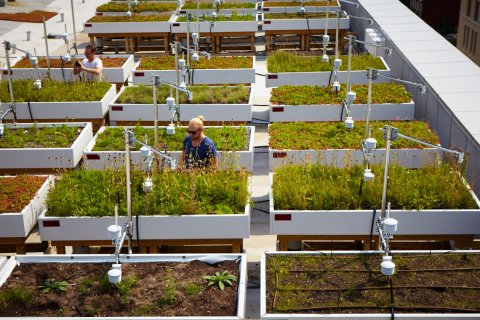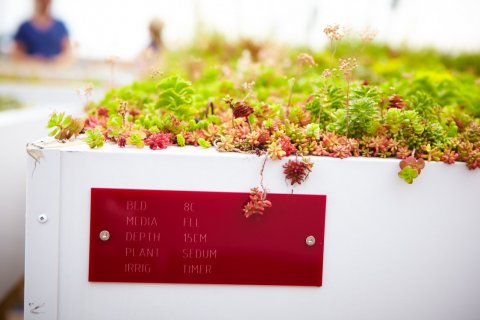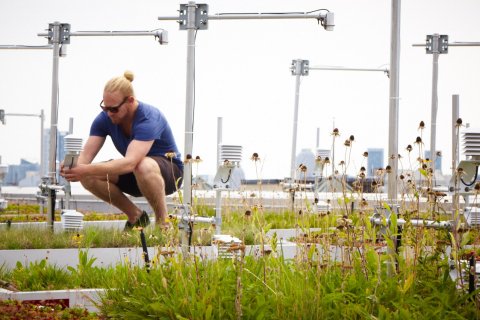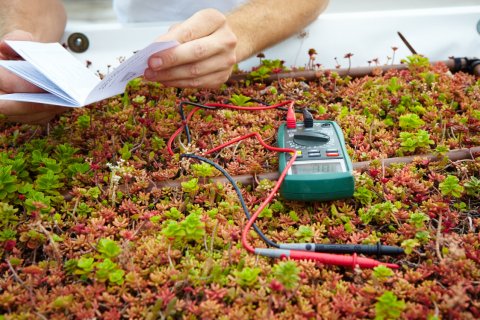In 2009, Toronto became the first city in North America to require new buildings over a certain size to have a green roof. But what kind of green roof best suits the city’s climate? And what combination of plants and soils will generate the most positive environmental effects and reduce storm water run-off? A team of U of T researchers is trying to find out using an experimental green roof built atop the Daniels Faculty of Architecture, Landscape, and Design.
The Green Roof Innovation Testing Laboratory (GRIT Lab), led by Professor Liat Margolis, includes 33 plant beds, a weather station, and, as of last fall, 270 sensors that measure everything from soil moisture to air temperature to excess water flow. Each bed features a different combination of plants, soil, and irrigation techniques, which together reduce storm water run-off and cool the air to varying degrees.
This summer, graduate students will be monitoring plant growth and the sensor data to see which plant beds perform the best. This information could help guide construction decisions for hundreds of green roofs that will soon be built in Toronto – leading to a more sustainable city for us all.
Visit grit.daniels.utoronto.ca for more information.
Click on the image below to begin a slideshow with captions.











